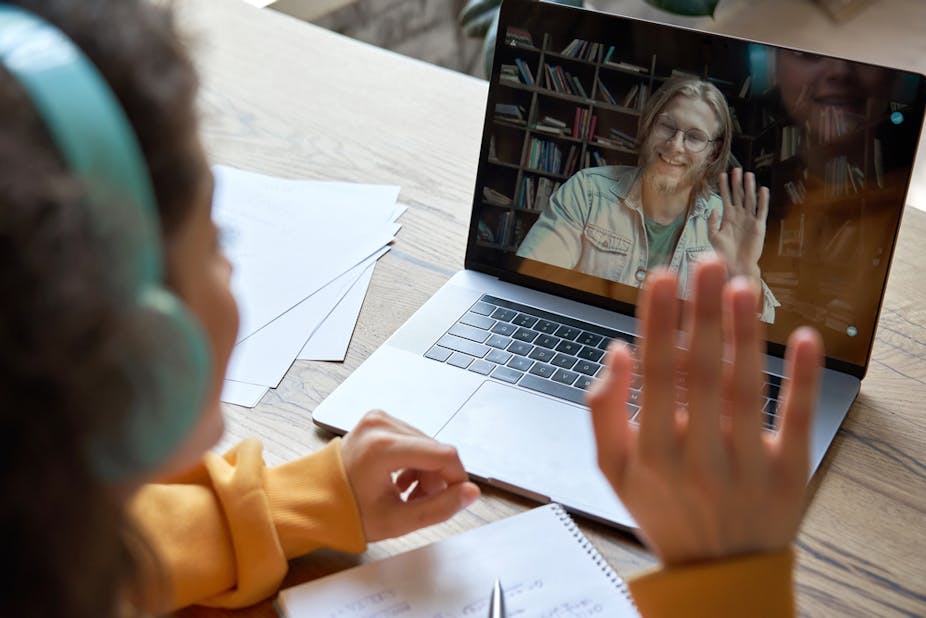As many have observed, the COVID-19 pandemic has laid bare many challenges that students face at school and higher education institutions. In South Africa, these relate particularly to inequalities arising from students’ diverse socioeconomic backgrounds. These inequalities account for the learning barriers and inability to learn effectively.
Contributing to ineffective learning, research conducted in South Africa showed that a total of 97% of educators never or seldom use a flexible curriculum and extra time to accommodate the diverse learning needs of students.
South Africa’s constitution provides for equal access to education and its inclusive education policy exists to make this a reality. But in practice, in classrooms, students’ diverse needs are not being met. The results of ineffective teaching can be seen in the student dropout rate in South Africa, which increase annually. It’s estimated that 60% of young South Africans effectively drop out of school, without any schooling qualification.
The reasons for this could be slow schooling progression due to repetition of school years. Contextual factors also play a role. These include poverty, absenteeism of educators, ill-equipped and large classes, lack of teaching and learning resources, students with insufficient reading and writing skills and inadequately trained educators. Additionally, the lack of educators’ skills in adjusting the curriculum to meet the diverse learning needs of a multicultural learner body hampers the academic progress of South African students.
A study was conducted among a group of student teachers to see whether a different approach to instruction could help them. This approach is called differentiated instruction – that is when the instructor tailor-makes support for individual students. Content, assessment and strategies are designed to meet their needs. The results suggested that this could improve students’ performance.
But COVID-19 has added to students’ challenges. Teaching and learning was largely based on technology and forced online teaching. The change to online, remote teaching has contributed to students failing or dropping out because they have complex needs which some poorly resourced institutions can’t meet. The need for access to technology added to existing difficulties such as language.
On the other hand, this switch to more online teaching and learning could be an opportunity to embrace inclusive education and create differentiated online teaching activities. It could be a way to introduce variety which benefits students.
Differentiated teaching and learning style
A study was conducted that looked at the influence of differentiated assignments on first-year student teachers’ academic progress in a South African university. These students faced a typical set of challenges, including insufficient English language skills, lack of confidence to communicate in class discussions, the inability to question unclear concepts and lack of time management and critical thinking skills. Most were from rural backgrounds. They were trying to adapt to urban learning environments and had financial constraints.
One group was given three assignments adapted for their learning style. They could choose how they preferred to complete the task by using various visual aids to interpret or summarise data and solve problems. The other group was not given this choice.
In a test at the end of the semester, the group that had chosen the method that suited them, performed on average 6% better than the other group. But they still had language difficulties and needed help to clarify concepts and new terminology.
As many have been agitating, this emphasises the importance of decolonising the medium of instruction for cognitive justice – “equal treatment of all forms of knowledge”.
These results suggest that lecturers must reassess and adjust their pedagogical practices. They must also include the needs of students in a digitally orientated world. Some students require in-person contact with their lecturer to understand abstract concepts.
Guidelines to create online differentiated activities
The continuing COVID-19 pandemic is not only challenging lecturers to ensure all students are effectively included in teaching and learning, but could also be an opportunity to embrace inclusive education.
The lecturer is central in the successful creation of online differentiated learning activities. Before creating an online assignment, a lecturer should be well acquainted with the learning disabilities and needs of their students, available technology applications, diverse instruction methods, visual illustrations, and other strategies to overcome learning barriers.
We’ve drawn on our experience and research to suggest some guidelines for teachers to create differentiated activities. These can start with simpler activities and move to more complex ones to ensure students grasp the new content. Immediate feedback is essential.
Divide a lesson’s content into three sections, each suited to a different learning preference:
A short activity to introduce and clarify new concepts of the lesson. Use videos and visual images.
An interactive teaching and learning activity followed by short-answer questions online.
Self-study or a research activity (reading and writing).
When compiling online lessons for disadvantaged English second language students, teachers should consider the following:
Set clear lesson outcomes so that students know what they should accomplish with the lesson content and activities.
Use visual images and apply culturally relevant texts that can be related and applied to students’ real-life experiences.
Use visual images to illustrate unclear concepts. Describe and explain the relevance of the images.
Use colour effectively to ensure the contrast is easily readable.
Create short video clips to demonstrate physical sciences experiments, calculations or clarification of abstract concepts.
Use short paragraphs and short sentences.
Create documents that are structured with page numbers, clear headings and sub-headings.
Create short-answer questions.
Research findings have indicated that interesting, fun and enjoyable online teaching and learning methods stimulate students’ curiosity and contribute to effective learning, regardless of their needs and their learning style preferences. For example, 3D-illustrated lectures can improve students’ concentration and engagement.
Given the extra workload, lecturers from different institutions need to collaborate to compile interesting online lessons. These lessons can also be video recorded and, ideally, broadcast so that students who don’t have access to data can view them.

